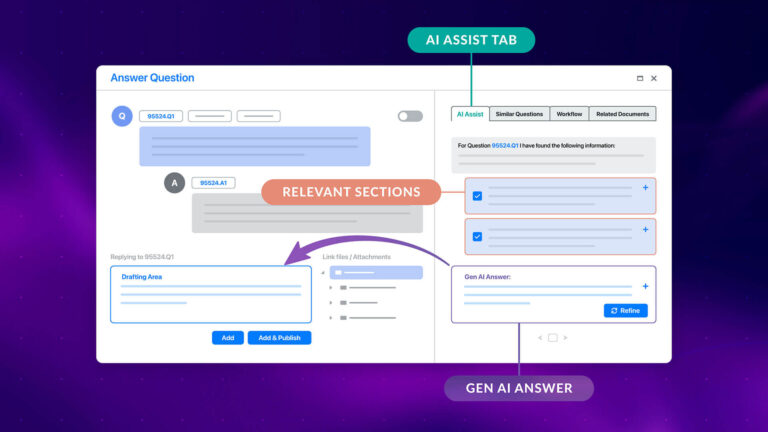What is a Data Room?
Virtual Data Rooms can be used for a variety of vital tasks, but at their core, they’re highly secure, collaborative, and easy to use locations used by businesses and organisations to conduct high-stakes transactions, review legal documentation and maintain critical data.
Typically, Virtual Data Rooms, are used for M&A, real estate transactions, raising capital, asset lifecycle management, and IPOs.
Physical data rooms have long been superseded by Virtual Data Rooms as they are fast, secure, simple to use, affordable and of course more accessible. Virtual Data Rooms are now being relied upon to facilitate data storage and document sharing during due diligence processes, but this was not always the case. In this blog, we’ll discuss the good, bad, and ugly of the history of Data Rooms.
Early Days of M&As and Data Rooms
Data rooms have been behind large financial transactions for a long time. Of course, businesses have been acquired or merged for nearly as long as people have been selling goods or services, but the current process as we understand it today was put in place during the 19th century.
That period became known as The Great Merger Movement and mergers and acquisitions required hard copies of vital paperwork to be safely stored, leading to the importance of a physical data room. The data room would be treated as a bank vault and be highly secure due to the sensitive nature of the documents inside.
Of course, problems weren’t uncommon with this arrangement. It meant that financiers and key bidders often had to travel to one specific location, often from all corners of the globe making the process of merging and acquiring businesses more expensive. Also, having all that sensitive information in one physical location was never going to guarantee 100% security. Data breaches happened frequently and some of these breaches became very well-known resulting in problems such as insider trading.
Some of the most famous examples of insider trading caused by these problems reportedly include Albert H. Wiggin, the Market Crash Millionaire who essentially shorted his own company. Then there was the Precognition Rat Pack in the mid-1980s, whose gains were reportedly made possible by vital information leaks. The list of such crimes is endless and it quickly became clear that things needed to change, however, a solution was not clear and technology needed to catch up.

Change Was Needed
Data security became the driver of change in the world of data rooms and technological advancement allowed for faster due diligence processes for businesses and organisations the world over. The 1960s and 70s were a time of huge upheaval and change in terms of technology and this is when storage technology really began to improve.
Those advancements really started to bear fruit in 1984 when Sony first released the CD-ROM (compact disc – read-only memory) and it was obvious from then that the switch from physical to digital storage solutions was underway. CD-ROMs could store a lot more information than floppy discs, which were previously used by most businesses for their storage needs. And it wouldn’t be too long before new innovations replaced the CD-ROM.
Next came external hard drives and flash drives, which could again expand storage potential and perform more securely than CD-ROMs leading to their replacement and the technological development continued apace.
When a law clerk was carrying out their due diligence, they no longer needed to worry about working their way through a mountain of files and binders. Instead, everything could be reviewed digitally.
From this point forward, it was obvious that sensitive data was to be stored digitally and not physically. The storage examples discussed above still had problems though, such as corruption and physical loss so people carried on pushing for better alternatives.
Online Data Storage – Cloud Computing
The term ‘Cloud Computing’ was first coined in 1996 by George Favaloro from Compaq Computers when their development made online data storage possible. A decade after Favaloro first coined the term, tech giants such as Google began using the technology and other companies quickly followed suit as its benefits became clear to the wider world. It was something businesses were very keen not to miss out on.
It was Google CEO Eric Schmidt who first brought the concept of cloud computing to a wider audience in 2006 when he gave a presentation to a conference and discussed the idea of putting data services and architecture on servers and many of the biggest global companies began using cloud computing in their own ways. Companies such as Amazon, Microsoft, and IBM quickly jumped on board and made the most of what cloud computing could offer them.
This new technology was already beginning to have an impact on M&A transactions and those involved were understandably excited about the latest development including increased speed of transactions and preserving mission-critical documents.
At the time, physical data rooms offered a small edge over online data storage solutions. For example, data rooms still catered to the necessary level of securitisation demanded by M&A transactions, and the new technologies such as cloud computing had to match and exceed what physical data rooms provided before they would be relied upon. There was clearly still work to do, but that’s when Virtual Data Rooms arrived and changed everything.
Virtual Data Rooms – Early Days
In 2001, Imprima realised the potential of Cloud Computing and started developing a product that would go on to be the solution that Due Diligence had been looking for and launched Europe’s first Virtual Data Room named ‘Imprima Irooms’ (now Imprima VDR).
Virtual Data Rooms brought about lots of benefits and improvements for due diligence transactions, but that’s not to say the transition from physical data rooms to these all-new Virtual Data Rooms was smooth and effortless; it certainly wasn’t. In the early days, there were plenty of challenges to overcome. First of all, clients had to be taught about and convinced of the power and security of Virtual Data Rooms compared to the alternatives. It was a case of ‘better the devil you know’ for many people.
Accepting that digital storage in the form of a Virtual Data Room was the better and more secure option took time for industry insiders in the mid-to-late-2000s. The legal credentials for digital documents had to be obtained as well.
Client processes had to be transitioned from paper to digital, which involved scanning and uploading files that were currently stored on paper in a physical location. It was necessary, as well, for the online environment to cater to large volumes of documentation.
As with all new technologies, the early days of Virtual Data Rooms were certainly tough and there were many obstacles to success, but success arrived when Imprima iRooms 2.0 (now Imprima VDR) launched in 2002 seeing great improvements in terms of speed and security.
As innovations continued to flow forth and understanding increased, Virtual Data Rooms were accepted more until they became the norm. Thanks to innovation and a thirst for process improvement, we arrived at the point we’re at today.

The Present and the Future
Today, almost all due diligence processes are carried out via Virtual Data Rooms and Imprima is proud to still be pioneering the industry that it helped develop in those early years.
The technology that powers these Virtual Data Rooms continues to improve as innovations keep occurring. That’s because they offer the security, versatility, and speed that can’t be beaten which is good news for businesses and organisations all over the world, and the process of innovation is not over yet.
The main thing that businesses care about, though, is security and this is where Virtual Data Rooms continue to shine and improve. Imprima is proud to have the highest security available (ISO 27001) for our Virtual Data Room and increasing technological advancement means that Virtual Data Rooms are secure in ways that were previously unimaginable. Security and speed of transaction is what Imprima is continuously seeking to innovate.
Seeking faster ways to improve the speed of transactions led Imprima to integrate an AI tool into our Virtual Data Room. Our Artificial Intelligence Virtual Data Room integration offers precision, speed, and outcomes that can’t be beaten, using technology that’s at the cutting edge of due diligence processing enables you to reduce errors during the due diligence process which we discuss more in our Whitepaper ‘Artificial Intelligence in Due Diligence’
Our AI integrated Virtual Data Room can’t be ignored and it could be something that your due diligence process benefits from in huge ways.
If you’re looking to benefit from the latest technological advances in order to streamline your due diligence processes, contact Imprima VDR today.






